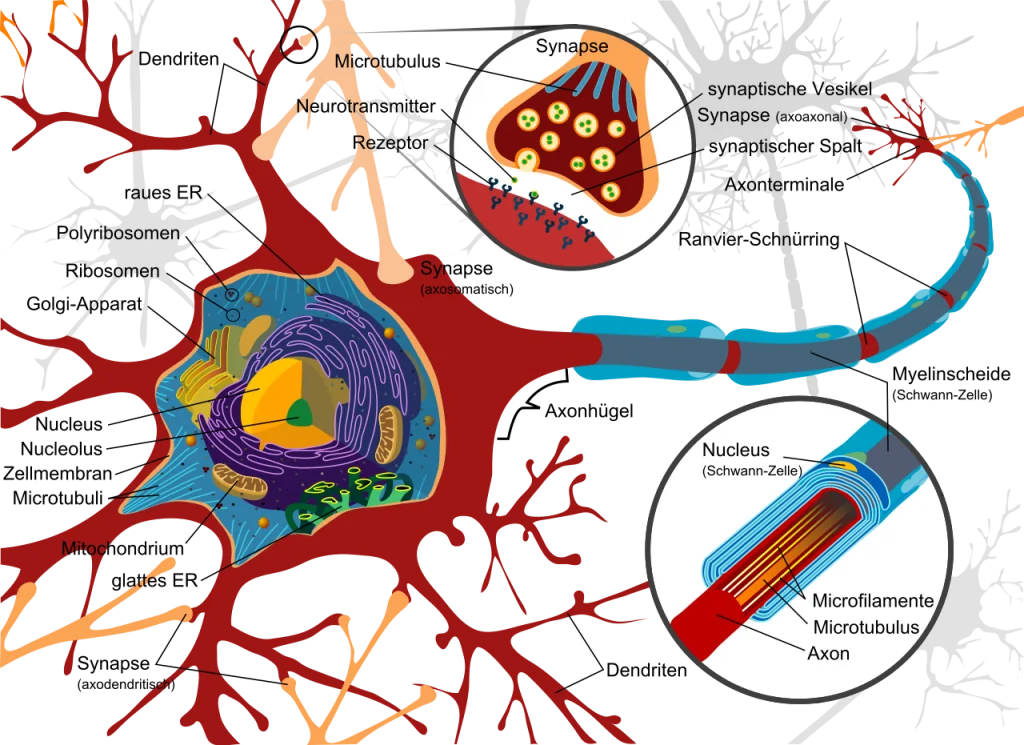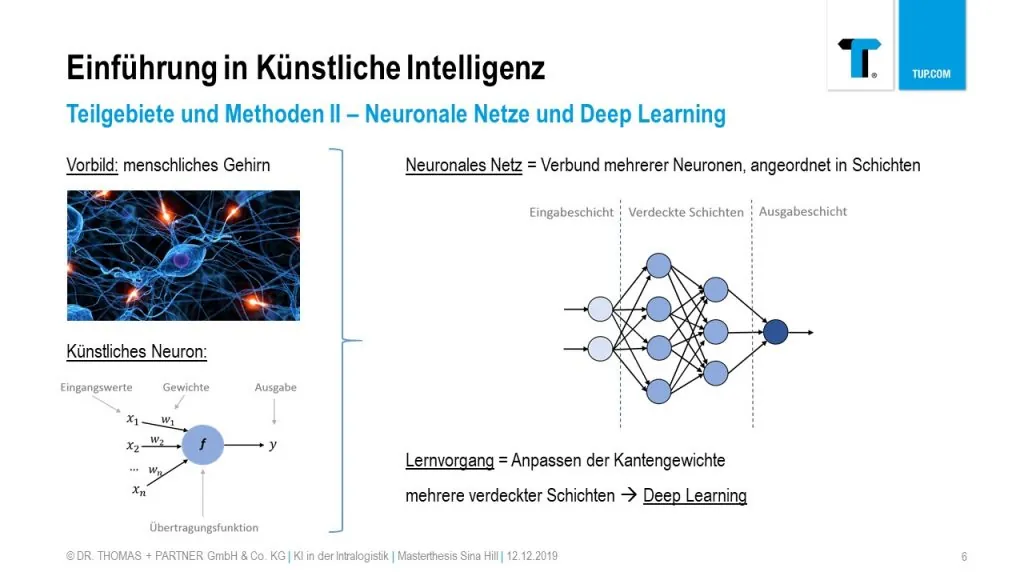Artificial Neural Networks
In the third part of the TUP series on Artificial Intelligence (AI) we deal with a topic that is essential for AI: Artificial Neural Networks (ANN). With the help of ANN, great progress in machine learning (ML) has been achieved in recent years. No other field has advanced research in this area so quickly and so far. From image processing and speech recognition to medical diagnostics, ANN are shaping the modern world.
ANN are one of the oldest fields of research in the AI environment. Nowadays they are the subject of research in neuroinformatics, but already in the 1940s, with the advent of the first computers, the basic theories and applications in the field of applied mathematics were developed. Many of the findings of that time are still valid today, such as the Hebbian learning rule. However, it was the advent of powerful computers and the associated possibility of processing large amounts of data that helped ANN to achieve their success in our society. For some years now, the term has been circulating in the public and specialist media worldwide. But what does it mean in practice?
Nature as a model: How artificial neural networks work
As already mentioned, ANN are an essential aspect of AI, because they enable the so-called machine learning. The term itself is derived from a biological analogy. ANN are modeled on the neural networks found in nature, as they occur in the brains of many living beings. In the human brain alone, there are said to be about 86 billion individual neurons that are interconnected. The resulting neural networks form the foundation for the processing of signals in the human body.

In a nutshell, natural neural networks consist of three components: the synapses (the interface to other cells), the axon (the connecting cell arm) and the cell body. When the synapses receive stimuli, they transmit this signal to the cell body. There, the signal strength determines whether the signal is passed on via the axon. The ANN function in a similar way. They are structured so that the individual signals can be weighted and summed. In practice, an artificial neural network ‘learns’ mainly by changing the weights of the incoming signals.
Structure of an artificial neuron
Artificial neurons are not simulations of their biological cousins, but mathematical formulas that are linked together in a network. These formulas can be designed individually and also the type of data processing can be determined, for example, whether certain values should be adjusted or not before being processed by the neuron. This makes these networks highly adaptable, but also very complex to configure.

How hidden layers work in neural networks
The structure of the ANN is similar to that of the neurons in the human brain. The artificial neurons are arranged in successive layers and are interconnected. There is an input layer and an output layer, as well as so-called hidden layers in between.

The more complex a task is, the more hidden layers are needed to solve it. If, for example, a digital image is to be analyzed, the first layer initially only recognizes the brightness values of the individual pixels. The second layer would then detect that some of the pixels are connected to edges. Layer by layer, the image is analyzed until the entire pattern is detected. Each layer helps to process the incoming data.
The number of layers describes the architecture of the network. This results in a great variety of possibilities. Some variants can be viewed on the website of the independent research institution ‘The Asimov Institute’. An ANN with many hidden layers is also called Deep Neural Networks, whose decision paths can often only be partially understood by humans. Generally one distinguishes between feedforward networks and recurrent networks. In feedforward networks there is only one direction for the flow of information – from the input layer via the hidden layers to the output layer. In contrast to this, in recurrent networks it is possible to let information flow backwards.
Indispensable: Learning rules and training data
But it is a long way until an ANN can solve a complex task independently, because it has to be trained first. This requires learning rules which the net can later apply and adapt automatically. Extensive training data is also required. During training, the weighting of the connections between the artificial neurons changes, depending on the applied learning rules.
Generally one can distinguish between two types of learning: Supervised and unsupervised learning. In supervised learning, the result is predetermined and monitored by the human being. The latter gives feedback to the ANN whether the achieved result corresponds to the desired result. Based on the constant comparison between target and actual result, the network learns to link the neurons appropriately. In unsupervised learning, no such result is given and checked. The learning process is based solely on the information of the many different patterns entered. The ANN makes the adjustments based only on the information entered. The rough application scenarios are that unsupervised learning is used in situations with huge, non-transparent amounts of data, where a human or another method of machine learning cannot detect patterns: In supervised learning, the goal to be achieved is defined, which often goes hand in hand with an, at least superficial, understanding of the pattern underlying the task, which should, however, be screened for optimization potentials.
Here is an example of a neural network that learns on the basis of clearly defined target conditions, in this case, to get to the end of the level if possible.
An interface for a configurable neural network is provided on playground.tensorflow.org. A deeper insight into the topic is provided by the AI experiments and projects of the Google company Alphabet.
Artificial Neural Networks in Intralogistics
ANN have become very important part of the business world in recent years. They form the basis for many systems that work with Artificial Intelligence (AI). From image and speech recognition to the control of complex systems, early warning systems and time series analysis, many application methods are possible and in use.
This makes them particularly suitable for use in intralogistics. Here they are used for pattern recognition, among other things. ANN can recognize trend articles, for example, whereupon measures can be taken to optimize their storage. ANN can also support article recognition in picking processes (pick-by-vision, pick-by-voice etc.). As ANN is the basis for machine learning, it also ensures progress in the area of process optimization. Thus, they can help to organize processes more efficiently and avoid possible bottlenecks or to cushion sudden interferences in the operating schedule.
Fazit
Whether in Google searches, in control systems of self-driven cars or in chess computers – artificial intelligence has become an indispensable part of modern society. The greatest strength of ANN is that they can be trained for a specific task, which they can then perform independently. Once they are trained, they are able to handle this task much better than humans, because they are able to process large amounts of data at once.